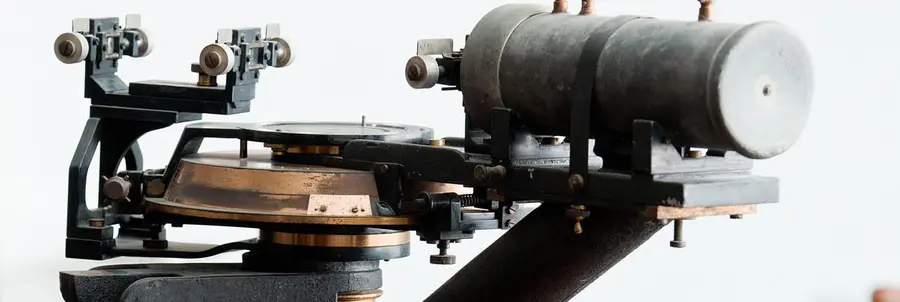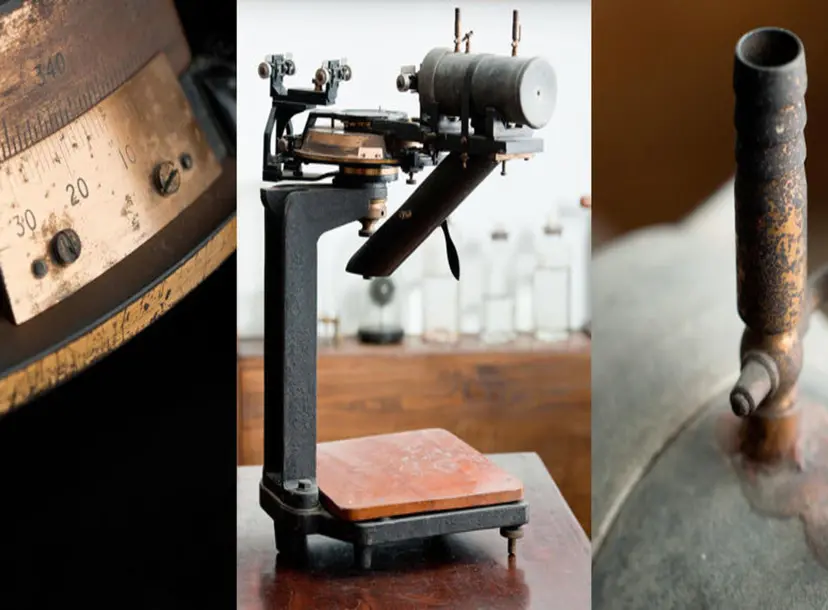Date: 1912
Place made: Leeds
Alternative name: Ionization Spectrometer
Materials: Metal, Iron, Copper, Glass, Wood, Enamel

Description
This apparatus is Bragg’s Ionization Spectrometer, the prototype of all modern x-ray diffractometers.
Sir William Henry Bragg (1862-1942) was a pioneering British scientist in solid state physics. After graduating from Trinity College Cambridge he became professor of Mathematics and Physics at the new University of Adelaide in South Australia in 1885. He thrived in this new environment, becoming a good lecturer also teaching himself to be an instrument maker, enabling himself to make all the equipment he would need for a practical laboratory. His area of original research was investigating alpha, beta and gamma rays.
In 1907, after being elected to the Royal Society, Bragg returned to England to become a Professor at Leeds University and continued to develop his view that both gamma rays and x-rays have particle like properties.
Bragg became intrigued by the work of Max Von Laue who was undertaking crystal x-ray research and who announced in 1912 that crystals could diffract x-rays implying that x-rays must be waves like light rather than particles.
Bragg began experiments, along with his son William Lawrence Bragg a student at Trinity College Cambridge, to try and recreate Laue’s results. As part of their work William Henry Bragg designed and made this spectrometer in order to produce molecular analysis of crystals.
The research undertaken by the father and son team jointly earned them the Nobel Prize for Physics in 1915.
Where can I view this?
This object is currently on display in the Lower Ground Floor of the Royal Institution in the Faraday Museum.



